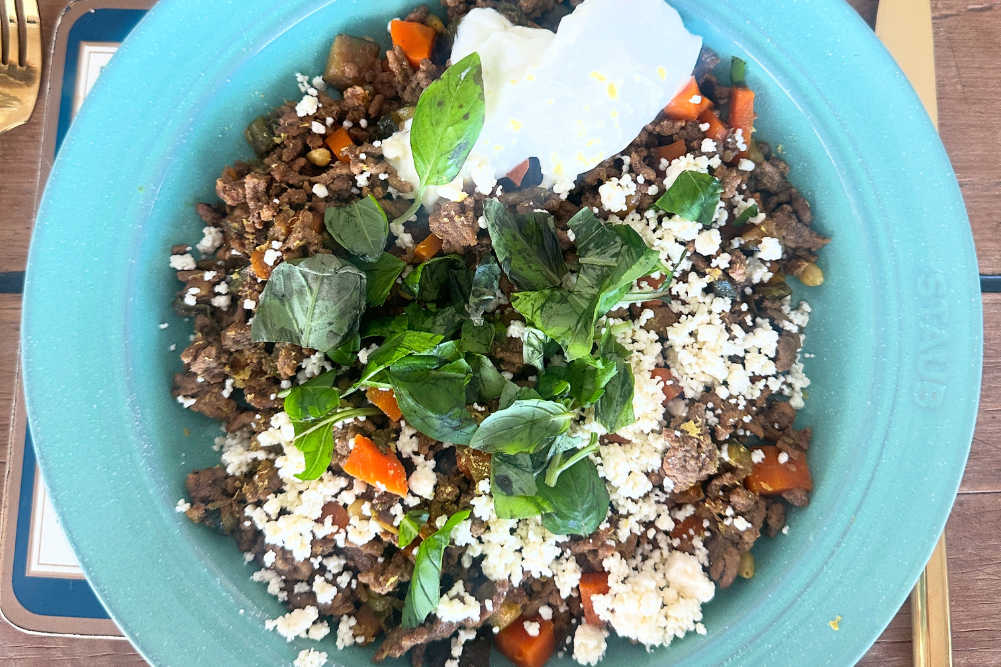Cultivating a deliberate practice
Learn how to turn off autopilot and move from a practice that is “naive” to a purposeful and deliberate practice.
Self-improvement is at the core of human activity. You want to live a happier and fuller life, have better relationships and achieve your professional best. You want to do better and be better than you were last year, last week or last session. You want to evolve to be who you were meant to be and be able look back with a sense of pride and accomplishment when you’ve achieved a goal. You want a sense of purpose, something to strive for and something to keep you from treading water for too long.
To reach your goals — becoming a great cook, improving your skills to get a better job or mastering a musical instrument or game like chess — you often rely on practice to get you there. Yet the maxim “practice makes perfect” is not necessarily the best and most efficient way to get you where you want to go.
Indeed, if in this practice you are simply repeating mistakes or poor techniques, if you haven’t got a clear goal or aren’t sufficiently challenged, all the practice in the world won’t benefit your efforts in any meaningful way.
Instead, you need to be thinking about the quality and type of practice you do: what are the elements you need to concentrate on? How do you bring it all together? Simply put, you need to move from a practice that is “naive” to one that is purposeful and deliberate. One that encompasses measures, proper technique, challenges and goals.
Deliberate practice is a theory posited by psychologist Anders Ericsson in the 1990s that suggests that the development of skills occurs best when you incorporate a self-reflective feedback loop into the process of improvement rather than simply performing a task repetitively until you think you’ve mastered it.
It is a type and quality of practice that requires you to do a number of specific things to help you move towards success. These include: identifying what elements of a task or activity you need to do better in order to achieve an overall goal; making a deliberate plan for how to do what you need to do; gathering input from others via instruction or observation; and developing the ability to focus on the details of what improvement looks like.
For Ericsson, who has run countless studies over the past 30 years and written a number of books including Peak: How All of Us Can Achieve Extraordinary Things, it is this kind of practice that enables individuals to become the best in their field. While there are many who imagine it is innate talent, natural ability and even luck that enables people to excel, Ericsson doesn’t believe in the idea of prodigies. Instead, he believes that it is deliberate practice that can and does enhance the kind of genetic factors like size or excellent eyesight or reflexes that can give people an advantage in a particular activity. For example, height can make it easier to slam dunk a basketball or give you an advantage on the basketball court, but being tall in itself will not make you a top-notch player.
And this is where the differences between naive practice and deliberate practice come in.
Naive practice
Naive practice is what most people do: you have a go, but that’s about all. You may push yourself a little but don’t do so with any real plan or intent, and when you reach a skill level that feels good enough, you stop improving and can even lose these gains over time. Just going for a run won’t do much to improve your stamina or fitness because you aren’t pushing yourself, and the more automated or mindless your performance becomes, the less you’re learning.
Deliberate practice
Deliberate or purposeful practice, on the other hand, has well-defined specific goals attached to it which allow you to judge whether your practice is moving you toward the level of proficiency or expertise you’re looking for. Yet goal-setting is only one aspect of deliberate practice, with another significant aspect being focus.
Focus, says Ericsson, is what makes the difference between mindless repetitive efforts and purposeful efforts. For example, wanting to become fitter isn’t going to happen if you don’t have a specific goal in mind, such as being able to perform over a certain distance, or achieve a certain weight or reps. In essence it’s about smarter practice rather than just more practice.
To maintain motivation, deliberate practice depends on small, achievable, explicitly defined steps that help you to work towards your goals.
An easier way to understand the underlying mechanism of deliberate practice is to imagine that your goal is to run a five-kilometre marathon. To achieve this, deliberate practice would require you to not only learn to run for longer by developing your stamina, but also to reflect on and focus on things like your gait or running style — is it efficient? Is it safe? Are your thoughts helpful or limiting? Your routine — is it efficient? Or is it too much or too little?
The overall idea is improvement, to reach a level of competency that you want to achieve. And your practice should be completely focused on getting you there. Every time you practise, every time you get to your yoga mat, pick up your weights or head to class you need to ask yourself the question: How can I do this better?
In Ericsson’s theory there are four components to deliberate practice: goals, focus, feedback and challenge. Each of these components is required for deliberate practice to be effective, and without them we risk our efforts falling back into naive practice. How we can address and implement these components is outlined below.
Goals
As mentioned, establishing realistic and specific goals is key to deliberate practice. Having a vague goal of improving your work performance or qualifications to get a promotion, or getting better at cooking, or becoming more flexible doesn’t allow you to create a plan with the kind of milestones you need in order not only to measure your progress but also to trigger and maintain motivation.
Like most endeavours, developing your ability in any skill challenges your determination as you come across failures, plateaus, regression and trials. However, if you want to improve your skills and reach your goals you need to maintain a level of motivation to push through and persist when things get tough or frustrating.
For Ericsson in his studies, this comes down to harnessing personal strengths. For example, when a student in one of his studies hit the wall — in effect reaching his natural ceiling of abilities in a particular activity — his competitive nature and determination to improve even more was what kept him motivated to keep trying. As a result of these efforts he broke through that ceiling to achieve an even higher level of performance.
To maintain motivation, deliberate practice also depends on small, achievable, explicitly defined steps that help you to work towards your goals. These steps should be designed to take into account your current knowledge and skill level, becoming more and more challenging as you move toward your goals. For example, if becoming good at baking is your goal, setting goals with more and more complicated recipes as you successfully complete easier ones would provide the right kind of incremental challenges to your knowledge and skill.
But it’s not just about what you need to do, it’s also about frequency and duration. Ericsson’s work has found that top performers, no matter their area of skill, keep a similar practice schedule: brief but intense, daily or every other day practice sessions. So, making up a timetable of activity and sticking to it can keep you on track to meeting your goals.
Focus
Focus is key. Without intense focus on the elements of your practice that you need to improve to reach your goals, you won’t reach them. For example, what is stopping you from being flexible? Your back, hamstrings, calves? Is there an injury that might impede your efforts? And then, what steps do you need to take? How often? What does good form look like? What is a realistic time frame to meet your final goal and what are the lead-up goals you need to master so you maximise your progress?
Focus is also about performing consistent, programmed and repetitive activities or drills to enable you to meet your goals. This is not about putting on some music and just crunching out toe touches, instead it’s about paying close attention to form, movement and effort. Yet because deliberate practice requires your full attention, with intense mental and/or physical effort, it can only be sustained for short periods of time.
Indeed, Ericsson’s studies of extended practice have capped the ideal duration of practice at one hour per day, three to five days a week, with other studies demonstrating reduced benefits when your practice sessions go beyond two hours at any given time.
Feedback
Feedback is an important component of deliberate practice, too. Whether this comes from a third party or your own reflections on where you are now, compared with where you were last session or last week isn’t important, but you do need to be able to measure your improvements and ensure you are keeping your form or techniques true. Indeed, Ericsson believes that without feedback you can’t accurately assess what you need to improve or how close you are to achieving your goals.
As such, feedback should be seen as necessary for identifying areas where you still need to focus your attention and areas where you have made gains. For example, if flexibility is your goal and you can see that you’ve made advances in some ways but not others, you can adjust your plan to introduce activities to address the deficit.
Challenge
Moving out of your comfort zone, pushing yourself beyond what you already know and can do and upping your efforts are necessary for you to become better at whatever it is you want to achieve. Playing it safe keeps you stuck, keeps you from ever understanding your real capabilities, strengths, resilience and resolve. Which isn’t to say you take careless risks or physically harmful risks, but it does mean you push yourself to do more than you did last time.
For example, the premise of deliberate practice is that your current performance level during practice is not at your desired level, that a gap exists between what you can do and what you want to be able to do. By the end of a practice session, however, there needs to be something measurable to demonstrate that you’ve improved, even if incrementally.
Every time you practise, every time you get to your yoga mat, pick up your weights or head to class you need to ask yourself the question: How can I do this better?
Whether it’s about refining your form, increasing stamina, improving an aspect of your technique or increasing the ease with which you can perform something doesn’t matter. As long as you can see you’ve made a step in the right direction you are moving toward success and you can measure this progress in some way.
Yet, while extending yourself is the key to self-improvement, for Ericsson this isn’t necessarily just about trying harder. He instead likens the process to trying differently. This means that if you can’t seem to move forward any more with one approach, you need to try another and keep experimenting until you overcome whatever the hurdle is that is resisting your efforts to reach your goals.
Part of this may be about changing the way you see yourself or adjusting the mental representations you have of performing. Creating mental representations is another component of deliberate practice identified by Ericsson as being common among elite performers and useful in helping anyone to improve their performance.
Your skills in anything, suggests Ericsson, are based on the number and quality of mental representations you have for that particular activity or skill. For example, chess players, says Ericsson, improve most by reviewing and challenging themselves with expert matches. By doing this, they build mental representations of the games, which helps them improve much more effectively than if they simply played more games in general.
The high performer, says Ericsson, is acutely aware of how best to perform, through the mental representations they have of what they need to do. By comparing what they are doing with the ideal picture of performance they have created, they can modify their performance through reflection and adaptation to keep on track, eventually correlating their mental images of themselves with performing the skill at an expert level.
Deliberate practice is a long-term venture in improving yourself, and while you won’t all have the makings of a professional athlete, elite musician or yogi, you can learn to work more effectively to build or improve your skills and enjoy the rewards and sense of accomplishment of your efforts.








